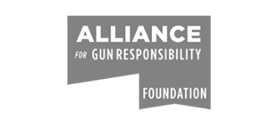New York Law
NEW YORK DOMESTIC VIOLENCE FIREARM PROHIBITIONS
New York Domestic Violence Firearm Purchase and Possession Prohibitions
Under New York law, an individual must have a license to purchase or possess a handgun.
No license shall be issued to or renewed for an individual who:
- Has been convicted anywhere of a serious offense or who is the subject of an outstanding warrant of arrest issued upon the alleged commission of a serious offense;1 or
- Has had a license revoked or is under a suspension or ineligibility order pursuant to a temporary order of protection or an order of protection.2
“Serious offense” is defined to include:
- Illegally using, carrying, or possessing a handgun or other dangerous weapon;
- Certain kinds of disorderly conduct;
- Certain crimes involving sodomy or rape;
- Endangering the welfare of a child;
- 3rd and 4th degree stalking;
- Any of the following offenses where the defendant and the person against whom the offense was committed were members of the same family or household*:
- 3rd degree assault;
- 2nd and 3rd degree menacing;
- Criminal obstruction of breathing or blood circulation;
- 2nd degree unlawful imprisonment;
- 3rd degree coercion;
- 3rd degree criminal tampering;
- 2nd degree criminal contempt;
- 1st degree harassment;
- 2nd degree aggravated harassment;
- 2nd and 3rd degree criminal trespass;
- 5th degree arson; or
- An attempt to commit any of the crimes listed above.3
NEW YORK CIVIL ORDERS OF PROTECTION FIREARM REMOVAL
Domestic Violence Civil Orders of Protection that Require Removal
A court issuing a temporary order of protection shall suspend any existing license possessed by the respondent, order the respondent ineligible for a firearm license, and order the immediate surrender of any or all firearms, rifles, and shotguns owned or possessed by the respondent
- When the court receives information that gives the court good cause to believe that:
- The respondent has a prior conviction of any violent felony offense;
- The respondent has previously been found to have willfully failed to obey a prior order of protection and such willful failure involved:
- the infliction of physical injury,
- the use or threatened use of a deadly weapon or dangerous instrument, or
- behavior constituting any violent felony offense; or
- The respondent has a prior conviction for stalking in the first, second, third, or fourth degree.4
- “[W]here the court finds a substantial risk that the respondent may use or threaten to use a firearm[, rifle, or shotgun] unlawfully against the person or persons for whose protection the temporary order of protection is issued[.]”5
A court issuing an order of protection shall revoke any existing firearm license possessed by the respondent, order the respondent ineligible for a firearm license, and order the immediate surrender of any and all firearms, rifles, and shotguns owned or possessed by the respondent
- Where the court finds that the conduct which resulted in the issuance of the order of protection involved:
- the infliction of physical injury;
- the use or threatened use of a deadly weapon or dangerous instrument; or
- behavior constituting any violent felony.6
- “[W]here the court finds a substantial risk that the respondent may use or threaten to use a firearm[, rifle, or shotgun] unlawfully against the person or persons for whose protection the order of protection was issued[.]”7
For a respondent who has been found to have willfully failed to obey a temporary order of protection or an order of protection, the court shall revoke or suspend or continue to suspend any existing firearm license possessed by the respondent, order the respondent ineligible for a firearm license, and order the immediate surrender of any and all firearms, rifles, and shotguns owned or possessed by the respondent where the willful failure to obey a temporary order of protection or an order of protection involves:
- (i) the infliction of physical injury;
- (ii) the use or threatened use of a deadly weapon or dangerous instrument;
- (iii) behavior constituting any violent felony offense; or
- (iv) behavior constituting stalking in the first, second, third, or fourth degree.8
For a respondent who has been found to have willfully failed to obey a temporary order of protection or an order of protection, the court shall revoke or suspend or continue to suspend any existing firearm license possessed by the respondent, order the respondent ineligible for a firearm license, and order the immediate surrender of any and all firearms, rifles, and shotguns owned or possessed by the respondent “where the court finds a substantial risk that the respondent may use or threaten to use a firearm[, rifle, or shotgun] unlawfully against the person or persons for whose protection the order of protection was issued[.]”9
Additionally, a court issuing a temporary or final order of protection may “require the … respondent … to observe such other conditions as are necessary to further the purposes of protection.”10
Individuals Who May Petition for an Order of Protection
The following persons may petition for an order of protection:
- Persons related by blood or marriage;
- Current or former spouses;
- Persons who have a child in common (regardless of whether such persons have been married or have lived together);
- Persons currently or formerly in an intimate relationship (regardless of whether such persons have lived together).11
Removal Process
Where a court has ordered the surrender of one or more firearms, rifles, or shotguns, the temporary order of protection or order of protection shall:
- Specify the place where such weapons shall be surrendered;
- Specify the date and time by which surrender shall be completed; and (to the extent possible)
- Describe such weapons to be surrendered and direct the authority receiving such weapons to immediately notify the court of the surrender.12
New York law provides that “surrender shall be made to the superintendent of the division of state police or a member thereof designated by such superintendent, or to the sheriff of the county in which such person resides, or in the county of Nassau or in the towns of Babylon, Brookhaven, Huntington, Islip, and Smithtown in the county of Suffolk to the commissioner of police or a member of the police department thereof designated by such commissioner, or if such person resides in a city, town other than one named [here], or village to the police commissioner or head of the police force or department thereof or to a member of the force or department designated by such commissioner or head” and that such firearms “shall be surrendered by such person in accordance with such terms and conditions as may be established by such superintendent, sheriff, police force, or department.”13
Prompt surrender of one or more firearms, rifles, or shotguns shall be considered a voluntary surrender.14*
Firearms, rifles, or shotguns surrendered pursuant to a temporary order of protection or order of protection shall be retained by the official to whom surrender was made for a period not to exceed one year. Prior to the expiration of such time period, the respondent may arrange for the sale or transfer of such firearm to a licensed firearms dealer.15
Return of Firearms to Respondent
In 2003, the Second Department of the Supreme Court of the State of New York’s Appellate Division held that the Family Court did not have jurisdiction to order the return of firearms that had been surrendered pursuant to an order of protection. 16The court further noted that individuals that have surrendered their firearms pursuant to court orders must apply for the return of firearms from the officer that has custody of such firearms.17 A respondent may apply to the Supreme Court pursuant to Article 78 of the Civil Practice Law and Rules for an order directing the release of firearms.18
Penalties for Violation
The following persons may file a petition alleging that the respondent has failed to obey a temporary order of protection or an order of protection issued in New York or in a court of competent jurisdiction of another state, territorial, or tribal jurisdiction:19
- Any person related to the respondent as a spouse, former spouse, parent, child, or member of the same family or household;
- A duly authorized agency, association, society, or institution;
- A peace officer, acting pursuant to their special duties, or a police officer;
- A person on the court’s own motion.20
Upon the filing of a petition, the court may:
- Hear the violation petition and, if satisfied that the respondent has willfully failed to obey the order, may modify an existing order to add reasonable conditions of behavior, make a new order of protection, order the forfeiture of bail if bail was ordered, order the respondent to pay the petitioner’s reasonable and necessary counsel fees in connection with the violation petition, and may commit the respondent to jail for a term not to exceed six months. If the willful failure to obey involved the infliction of physical injury or the use or threatened use of a deadly weapon or dangerous instrument, revocation of a license to carry, possess, repair, and dispose of firearms, immediate surrender of firearms, and disposal of any firearm owned or possessed by the respondent shall be mandatory;21
- Retain jurisdiction to hear and determine whether such violation constitutes contempt of court and transfer the allegations of criminal conduct constituting such violation to the district attorney for prosecution; or
- Transfer the entire proceeding to criminal court.22



